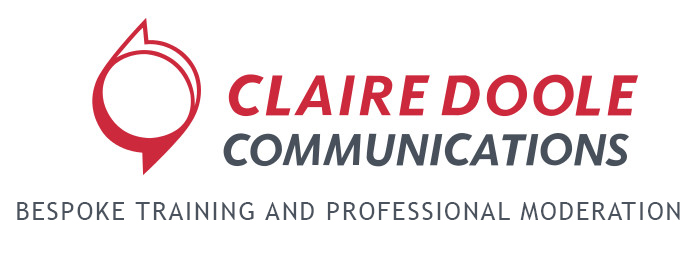
by Claire Doole | Mar 18, 2019 | Blog
Did any of you watch the Oscars last month? The format changed with no host – part of an effort to make the ceremony shorter – due to declining viewing figures in this day and age of shorter attention spans.
Whether high profile like the Oscars or for smaller awards at smaller events – think your annual conference or end of year party – ceremonies take planning and preparation.
Believe me, I know as I advise companies and organisations and have acted as host at a few awards ceremonies.

If you want to make sure your ceremony is remembered for the right reasons and not for the wrong ones – like the notorious “envelopegate” when “La La Land” was accidentally named the best picture instead of “Moonlight” at the 2017 Oscars – have a look at my tips for organisers, presenters, recipients and hosts.
Preparation prevents poor performance
Everybody needs to be on the same page about their role so organisers need to brief the presenters and recipients about the length of their remarks. The Oscars rule this year was no more than 90 seconds for the winners from the moment their name is called to the end of their speech. 90 seconds is 225 words on average when speaking in public in English.
Presenters remember it is not about you but the winners, so keep your remarks short.
A clear briefing about the content is also essential. I once had the head of the jury read out all the names of the winners at the beginning when he was meant to talk only about the selection process. I had to stop him in his tracks, not least because a very senior EU official was due to announce one of the winners!
It sounds obvious but presenters must have read, listened or watched the award winning entry. Some I have worked with asked me while on stage how to pronounce the name of the winner and their project.
On the day itself
Organisers must go through the choreography on stage with the presenters and winners (normally people know ahead of time if they have won!) at least 1-hour before.
If there are last minute cancellations, the presenters need to be assigned new tasks and quickly assimilate them. I once had a no-show and half an hour before the event the replacement presenter also announced they had to attend an important meeting so the pack of cards had to be reshuffled again – with a varying degree of success!
Many events are now live-streamed or videoed and the audience all have smart phones so that if it goes wrong, its digital footprint remains for ever and could even go viral.
I was pleased to read that the Oscars organisers have not ruled out reinstating a host as master of ceremonies next year. It was after all the host, Jimmy Kimmel, who reined in disaster during the notorious “envelopegate” gaffe in 2017. Sometimes a professional MC can save the day!
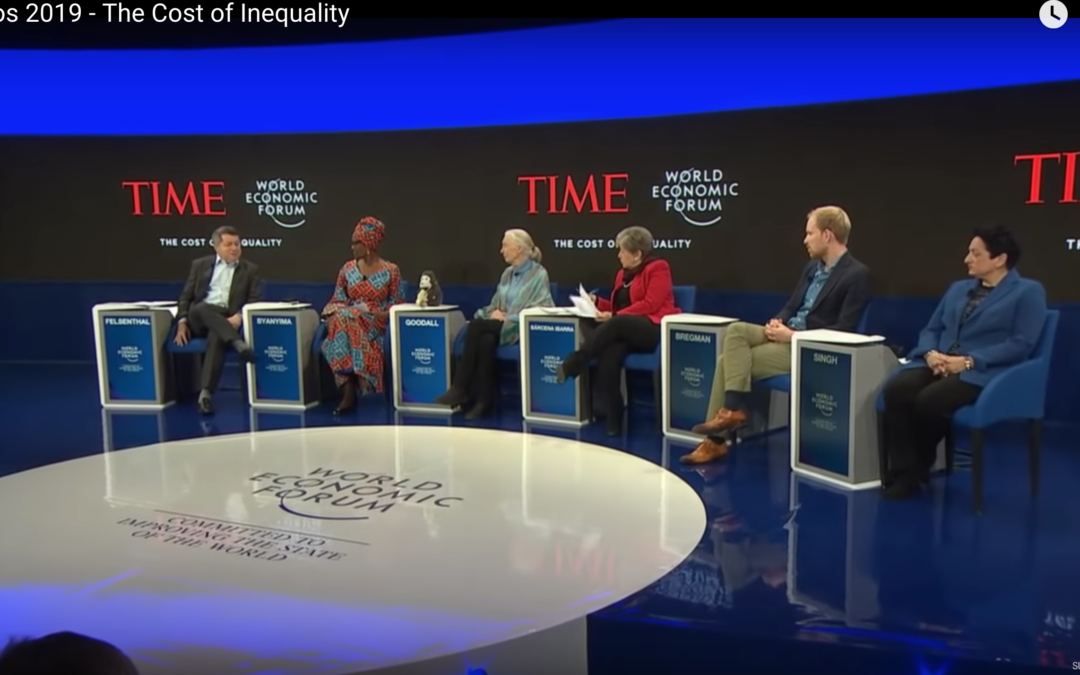
by Claire Doole | Feb 25, 2019 | Blog
How many of you attended this year’s gathering of the global elites at the World Economic Forum? If you were there, did you sit through any of the panel discussions? With the good and the great vying to be in the audience and on the podium, Davos panels are a hot, if pricey, event.
But how good are these discussions? Are they engaging, informative and thought-provoking?
Many a client has contacted me as a moderator saying they want a Davos-style panel discussion. In the conference/event industry, these panels with their star-studded line-up are obviously seen as the gold standard.
So, I decided to test this hypothesis and watch a panel in which Rutger Bregman, a Dutch historian, made headlines with his remarks about why no one at Davos was talking about the super rich avoiding paying taxes.
I watched the 1-hour session and was, to be frank, disappointed. Despite the expert and articulate speakers, there was no lively discussion. Although the title – the cost of inequality – was catchy, it was unclear the specific issues the panel was trying to address.
Instead, you got the tired format of each speaker giving opening remarks of 3 to 5 minutes followed by the moderator asking the panel in the exact same order a series a questions. The moderator failed to generate a discussion even when Bregman made his provocative comments on tax avoidance.
Admittedly, it is not easy with 5 speakers (3 to 4 is optimal) whose reason for being on the panel is not clear. Jane Goodall is an amazing primatologist, but is she really the right person to discuss the cost of inequality?
Fast-forward to 44.05, and you will hear one of the few members of the audience who got to ask a question, express surprise at the way the panel was created and remarking that it was extremely one-sided.
Tarnished gold
For me this panel did not meet the gold standard despite the excellent contributions of the Dutch historian and the executive director of Oxfam International.
All panels at Davos have star line-ups, but what they lack is a variety of formats and in many cases excellent moderators.
An exception this year was the panel on mental health matters with Prince William, Duke of Cambridge, and the Prime Minister of New Zealand, Jacinda Ardern, which was excellently moderated by a CNBC journalist.
Good TV journalists who know how to keep a conversation flowing and to time can make a big difference and breathe life into the most staid and familiar formats.
However overall, it would seem I am not alone in my disappointment at the standard of panels at Davos..
The Guardian concluded at the end of the 4-day talking shop that “Davos had lost its mojo” and that “the format – panel of experts – discussing the world’s problems looks tired”.
It may well be that Davos needs to be revamped as a forum – I have only ever attended as a journalist scurrying from one interviewee to the next.
However, the organisers armed with a dose of creativity could easily breathe new life into the panel format
Interactive and creative panel formats that work
I have always been impressed by the variety of formats used by the Women’s Forum for Economy and Society – which like the World Economic Forum has a main conference as well as regional conferences. One year they asked me to moderate three panels – all with different formats.
Panel 1 – Why are refugees only bad news? (A question in the title helps to focus the discussion). This was the classic Q and A format – with the moderator asking questions to 3 panellists and bringing in the audience.
Panel 2 – Why I am a feminist. The moderator interviewed the male CEO of Coca Cola, a self-declared feminist. Two female CEOs then joined the moderator on stage and started to ask him questions.
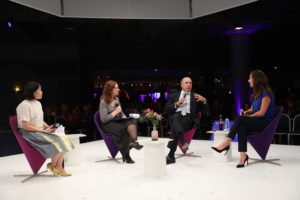
Panel 3 – Advancing women’s economic empowerment. The moderator launched a discussion with 2 speakers – then French presidential candidate, Emmanuel Macron, and the Canadian Minister for the Status of Women, Patty Hajdu. She then invited a third speaker – Arancha Gonzalez, Executive Director of the International Trade Centre – to join and ask any questions she had of the first two speakers.

Seating the audience in the round – the so-called fishbowl format – is excellent for interactivity. Another client added another twist by leaving an empty chair on the stage for members of the audience who were invited to ask questions to each speaker after the curated Q and A with the moderator.
So WEF, with your star speakers, revamped creative panel formats and dynamic moderators no doubt your 2020 sessions will be pure gold?
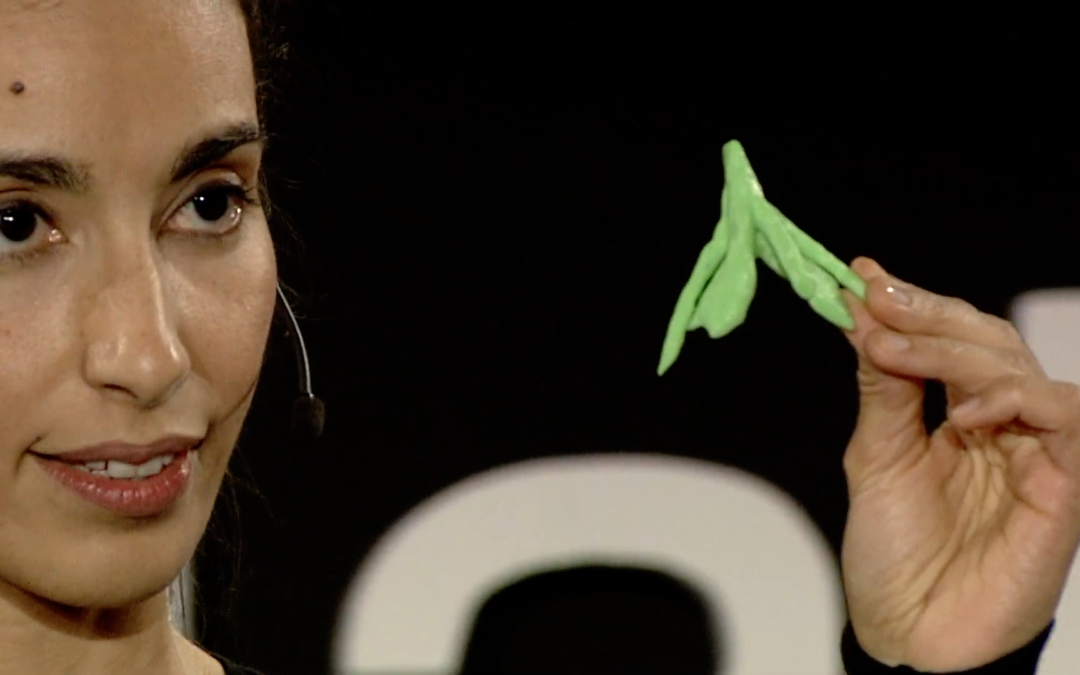
by Claire Doole | Jan 23, 2019 | Blog
Next time you present to colleagues at work or in public, think about using a prop.
A prop, a term used in the theatre, arouses the senses. Studies show that people learn and retain information much better if it is reinforced with visual aids. If they can touch, feel, smell or listen to these aids, then it is even more likely they will remember what you are saying.
In my public speaking courses, I often give this prop to participants to see how they react.

People realise it is a very simple music box and when they wind it up, it plays the EU anthem Ode to Joy. Then they read the words – “it won’t work by itself” – a perfect metaphor for the message of the developer, a Polish EU official, who uses it to encourage citizens to engage with the European Union.
But let me walk the talk, by showing you three short video clips of some of the speakers I coached at a recent UN TEDX who all used props effectively.
Props reinforce your message
Jasmine Abdulcadir, an obstetrician and gynaecologist who opened Geneva’s first clinic for women suffering from female genital mutilation received a standing ovation for her talk debunking the myths around FGM and female sexuality.
One of the myths is that women, who have had their clitoris cut, lose all sexual sensation. In fact, as Jasmine explains showing a model of the clitoris, the tip is a tiny part of a big deep organ, and that removing it does not mean women can’t experience sexual pleasure.
It was important to also show MRI scans and diagrams of the clitoris in the talk – amazingly it was only in 2018 that Geneva hospitals ran a course for medical students on the history, anatomy and biology of the clitoris; and it is only this year that an accurate drawing of the organ will be shown in biology textbooks in French speaking Switzerland!
Here is her talk.
Jennifer Shigoli, a social entrepreneur from Tanzania, developed reusable sanitary pads, a solution for many girls and women who were using feathers, paper and rags as they couldn’t afford to buy throwaway pads every month. She took us on her journey as a successful businesswoman manufacturing pads that have reduced the rates of absenteeism in schools and improved the livelihoods of the men and women who sell them.
Here is her talk.
Elise Dietrichson and Fatima Sator are two researchers on a mission to tell the world that it was thanks to the efforts of four Latin American women that the UN Charter includes the words “women” and “sex”.
To illustrate the point, Fatima showed the pink version of the UN Charter – which was also put on the audience’s seats as a memorable take-away from the event.
Here is their talk.
Do’s and Don’ts
Props help you manage audience attention span, by adding variety, stimulating interest and are another tool in your presenting kit.
Below are some key points about using them effectively:
1. The prop must be relevant to your message – if it is not, don’t use it.
2. The audience must be able to see the prop – count to 5 as you show or hold it up.
3. Practice with the prop to ensure it works – make sure you are comfortable picking
it up or taking it out of your pocket.
4. Have a backup in case it doesn’t work – a photo on a slide for example.
5. Keep the prop hidden until you need it – this ensures greater impact.
6. Put the prop away when you are finished with it – as otherwise it can be a
distraction for the rest of your presentation.
Be creative
There are many TED global talks that are memorable for their use of props, such as Bill Gates opening a jar of mosquitos while delivering a talk about malaria or Jill Bolte Taylor using a human brain while talking about her massive stroke.
These add a sense of drama that works well with certain audiences. But, I encourage you to be creative in front of any audience.
If you work for a food company, use samples that can be touched, smelt or even tasted. If you work in manufacturing, trade or finance, your mobile phone can be a useful prop to talk, for example, about complex issues like global supply chains, as the parts are made all over the world.
Believe me, whatever your industry or organisation, props, if well used, will ensure your presentation is not forgotten.

by Claire Doole | Dec 17, 2018 | Blog
Those who know me would say that I am not one for hyperbole. However the speakers I coached at the UN TEDx PlacedesNationsWomen event in December completely hit the target.
I coached 8 of the 11 speakers at the event, celebrating women’s empowerment.
The speakers had great content and delivery, and kept the audience engaged from start to finish.
Yet, it proved to be a lot of work for all those involved with many lessons learnt. So for those who are planning to organise a TEDx, give a talk or want to become a more impactful public speaker, here are 5 do’s and 5 don’ts from coaching and observing speakers.
Do’s
- Select a speaker fluent in the language of the talk. You have to memorise your TEDx talk, which means it helps to be absolutely fluent in the language. This will also ensure you sound natural and conversational when you deliver it. And a good memory is key!
- Have an inspiring personal story to tell. You have to put yourself in the story for it to resonate with the audience. Many professionals shy away from the personal, preferring to speak about “it” rather than “I”. But this is not a TEDx talk. You have to be prepared to open up in your talk, share your experiences, opinions and values.
- Leave behind your professional presenting style. You are no longer an academic, activist or lawyer, you are now a storyteller. You are not there to share your knowledge, but to persuade the audience your idea has merit. This means getting rid of unnecessary detail. You need to set the context, and what is most important are the individual stories you tell to illustrate your points and the narrative arc of the talk.
- Match your words to your voice and body language. You have to make sure that these three channels of communication are aligned. You need to guide the audience so they understand immediately the emotions (joy, sadness, compassion) you want them to feel. And to do this you have to modulate your speed, pitch and tone. The pause, for example, will let the emotion you want to convey hover in the air so that the audience has time to absorb it.
- Structure with clear signposts. You need to help your audience with short declarative sentences, which tell them where you are going. For example, this is my story of empowerment; I was in denial; or myths and taboos lead to stigma and harmful practices.
Don’ts
- Don’t write your talk to be read. Write your talk to be spoken. This means adding some short sentences as this will aid delivery and give the talk rhythm. Don’t weave your ideas subtly from one paragraph to another – talks have to be understood at first hearing, not second reading!
- Don’t write your talk too early. Talks take time to evolve. The talk you initially write may be too neutral. As you increase your understanding of what is a powerful TEDx talk, you will realise that it is an organic process as you gain greater confidence in your storytelling abilities.
- Don‘t write your talk at the last minute. You need time to absorb the talk, practice it by saying it out loud so that it becomes part of you. If you leave it late, then you are likely to fall into a deadly TEDx trap of not quite mastering your talk. If you recite it, the audience will feel that you are talking at them rather than to them.
- Don’t manipulate the audience. If you ask people to take an immediate action, make sure it is for the right reason and a coherent part of your talk. If it is a forced action, people are confused at best and manipulated at worst.
- Don’t look to be good, but to be yourself. Audiences have a sixth sense. They immediately spot those with fake smiles, tone and body language. They know when, behind the rhetorical flourishes, there is no substance. They don’t mind if you trip over your words, or even go blank, as long as you remain true to yourself, leave your ego behind and put yourself at the service of the audience.
Next month I shall share with you some of the highlights of the talks to illustrate some of the public speaking techniques that work and we practice in my coaching and training sessions.
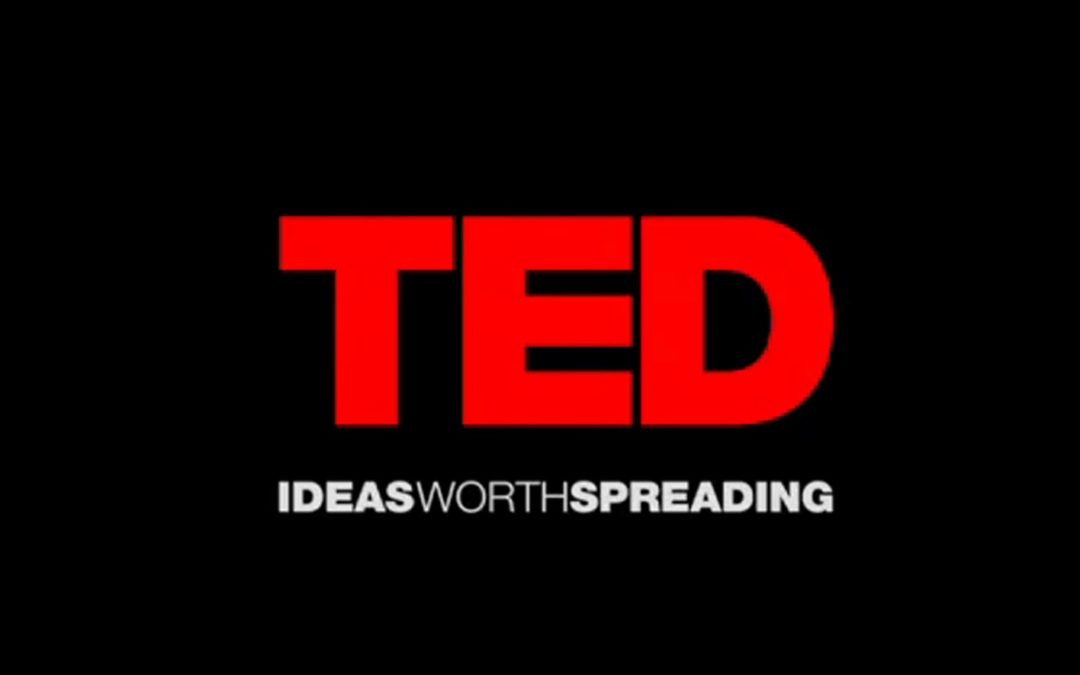
by Claire Doole | Nov 20, 2018 | Blog
A TED talk is all about sharing an inspiring idea. It sounds easy enough, but it is more difficult than you might think.
I speak from experience – having coached speakers for several TEDx events in Geneva and Lausanne and having been called in twice to salvage someone’s TED talk within days of the event!
So when I was asked by the UN to coach 9 speakers for their PlacedesNationsWomen event one of the first things I did was to write a guide on what makes a TED talk different from the usual presentation or keynote address.
Here are my tips on drafting the talk, based on my experience as a professional public speaker/ coach and the wonderful book, “TED Talks – The Official TED Guide to Public Speaking” by the head of TED, Chris Anderson.
- Make it personal: As a speaker, talk about an idea that matters deeply to you and transmit the idea and the passion you feel about it to your audience. It has to be an idea worth sharing!
- Know the audience: Think of yourself as a tour guide taking the audience on a journey to a new place. You need to begin where the audience is and steer them clearly and compellingly along the way.
- Stick with your idea: Think of your talk as about an idea rather than an issue. This is particularly important if you are tackling a tough topic where compassion fatigue can easily set in. An issue-based talk leads with morality. An idea based talk leads with curiosity. It says, “isn’t this interesting?” rather than “isn’t this terrible?” For example, this is an issue: Education for all. An idea would be framed as “Education’s potential is transformed if you focus on the amazing (and hilarious) creativity of kids.
- Connect the dots: You need a connecting theme, which ties together each narrative element. It is the idea that you want to construct in the minds of the audience. Can you put this in no more than 15 words?
- Make it memorable: Think about the three points/messages that you want the audience to remember when they leave the room. Studies show people rarely remember more than three points and recall drops dramatically after the first day.
The structure
Choose a structure that most powerfully develops your connecting theme. See below some suggestions, which can be mixed and matched over the talk.
- Personal journey: If you are sharing your personal journey then you may want to follow the classic “hero’s journey” structure where you have a goal but meet challenges along the way which you overcome and resolve the best you can.
- Persuade: If you want to persuade an audience that the way they currently see the world isn’t quite right, you will want to guide them through your argument so that is it plausible. This means breaking down your argument logically into small steps, perhaps even taking the counter position to show that it is flawed.
- Detective: Another way to build a persuasive case is to play detective. You start with a puzzle and then with the audience search for solutions, ruling them out one by one. You invite the audience on a process of discovery. This can work well if you are a scientist or researcher talking about a discovery you have made.
- Aspirational: You may want to speak of the world not as it is, but as it might be. You paint a picture of the alternative future you want and compare and contrast it with the situation today. (Think Martin Luther King, “I have a dream”.)
Techniques to make your talk memorable
- Open with impact. Within the first minute, you need to get the audience’s attention, make them curious and excited. Here are some ways to start.
- A surprising statement, fact or statistic
- A surprising rhetorical question
- Show a compelling slide, video or object
- A personal story or anecdote
You want to tease, but don’t give away your punch line. If you are looking to persuade or reveal a discovery you want to build up to your revelation.
- Close with impact.
- Move from the specific to the broad
- Call to action – invite people to take action on your idea.
- Personal commitment – make a commitment of your own.
- Values and vision – can you turn what you have discussed into an inspiring or hopeful vision of what might be?
- Narrative symmetry – the human brain likes balance so you may want to link back to your beginning so that the narrative comes full circle.
In my next blogs, I shall take you through how to align delivery and content as well as lessons learnt from my TED journey.

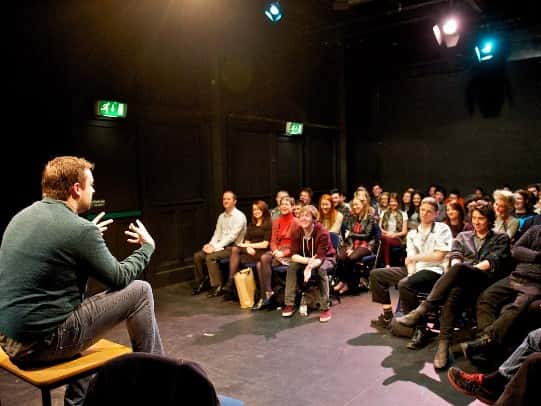
by Claire Doole | Oct 14, 2018 | Blog
Rapport is the foundation of influence and impact. An American psychiatrist and psychologist, Milton Erickson, once said, “With rapport, everything is possible. Without it, nothing is possible.”
So what is this magical ingredient in effective communications? It is about being on the same wavelength as someone else so that we feel connected. It often involves having shared values, beliefs or similar life experiences. I know, for example, that I usually instantly connect with someone who is or has been a journalist due to my time at the BBC.
But how do you build rapport with an audience made up of many different individuals? This is vital when you are speaking in public presenting, giving a keynote speech or sitting on a panel at a conference.
Many of the things that you do naturally one-on-one are applicable, such as finding common ground, asking questions and actively listening to what they are saying.
But when you want to build rapport with an audience, you need to use these skills more consciously.
Let me explain by sharing my list of how to do it, based on my experience as a moderator and public speaking coach.
Finding common ground
When you prepare your speech or remarks you need to think about your audience first and foremost. What are their needs, expectations and challenges? Far too often presenters think that communication is a one-way process but to have impact you need to ensure that your message has got across to the audience so that they are not only engaged but also feel, say or think differently as a result of your presentation.
Reading the room
I am often asked by people I coach/train how do I know that my message has landed. Well, the first thing is to read the room. Are people looking at you or reading their emails or looking out of the window? If they are looking at you, how are they looking – quizzically or in agreement? Do they have their hand on their chin, as this is often a sign that they are listening intently? What is their body language telling you? Are they slumped in their chair? Are they leaning back with a bored expression? If so it is up to you to reconnect again by changing your voice, body language or content.
Articulating what you see
This is a coaching technique that is very effective when speaking in public. If you see that your audience is either with you or against you, tell them what you are seeing. Check back with them if you are right that they are puzzled, sceptical or engaged. If you do this, it shows that you are in the moment and present and will show your audience that you care about them and their reaction.
Actively listen
Another coaching technique. We often listen at a superficial level – just waiting for our turn to speak. But you need to fully focus and show you are listening. You can do this with your body language – nodding your head, putting your hand on your chin, briefly moving towards the questioner during the Q and A session if standing or leaning forward if sitting. You can also do this by repeating back the same words or even using the same metaphors and analogies as the person who is talking. For example, “You say that you feel frustrated, that you are drowning with work, …..”
Pathos, pathos, pathos
As Socrates said if you want to really influence someone you have to have logos (logic), ethos (credibility) and pathos (stir emotion in the audience). You can read more about this in a previous blog.
Many of the people I coach and train shy away from stirring emotion in a professional context, but if you can add a dash of storytelling in your speech or remarks, you will immediately build a connection with the audience as since childhood we have been hot-wired to love stories.
All of this takes courage.
As you can see from this diagram about building rapport, if you move beyond the cliché and facts and start to share beliefs and opinions, you will build rapport. However disclosing more and increasing trust, does come with risks.
But if you want to have impact and influence, and it is done well, then I believe it is a risk worth taking.


